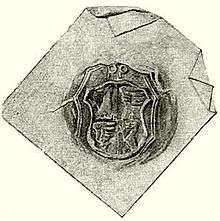Péter Petrovics

Péter Petrovics (Hungarian: Petrovics Péter; Serbian: Петар Петровић/Petar Petrović; c. 1486 – October 1557) was a Hungarian noble of Serb ethnicity from Banat, who was active in the 16th-century Transylvania. Count Petrovics first appeared on the historical scene after the death of Jovan Nenad, on the side of John Zápolya, with whom he had familial ties. In 1556, using Serbian troops, he attacked the units of Ferdinand I, Holy Roman Emperor and in doing so achieved the return to the Hungarian throne of John Sigismund Zápolya.
He had considerable wealth and power in the Eastern Hungarian Kingdom during this period, one of the kingdom's wealthiest landowners as a cousin and supporter of John Zápolya (John I), with a vast array of estates. He was a fervent supporter of the Reformation.[1][2] A staunchly anti-Habsburg, pro-Ottoman magnate who was a councilor and guardian of John Sigismund Zápolya (John II),[1][3][4] he was an adherent of Calvinism and used his power to be a major influence in the Reformation in Hungary, driving out altars and the portraits of saints from churches.[3][5] A great statesman, he was also commander of Temesvár (today Timișoara, Romania) and ban of Lugos and Karánsebes under Queen Isabella.[6] Petrovics also had large estate in Banat, around Temesvár.
He worked closely with Péter Melius Juhász, apostle and organizer of the Calvinist community in Debrecen.[7] In November 1554 he employed famed Italian Lutheran theologian Francesco Stancaro as the personal physician at his castle until his death in 1559.[8] Stancaro was actually a known influence on Debrecen clergyman Tamás Arany, who became involved in a heated debate with Petrovics's Calvinist associate Peter Melius Juhász over Antitrinitarian issues; but evidently this did not affect relations between Petrovics and Francesco Stancaro as he remained in his employ until his death.[8] Petrovics had in the previous years been pressed to leave the southern region of Temesvár (today's Timișoara), and had settled in the northern country. Thus it was in this area that he used to support Calvinist doctrines. If he had stayed in his original power base, where earlier with his help the Lutherans had already organized the first Hungarian superintendencies, then it is most probable that the Hungarian Calvinist Reformation would have begun with the Temesvár synod.
References
- 1 2 Reid, William Stanford; Woolley, Paul (1982). John Calvin, his influence in the Western world. Zondervan Pub. House. p. 146. ISBN 978-0-310-44721-4. Retrieved 12 September 2012.
- ↑ Keul, István (2009). Early Modern Religious Communities in East-Central Europe: Ethnic Diversity, Denominational Plurality, and Corporative Politics in the Principality of Transylvania (1526-1691). BRILL. p. 94. ISBN 978-90-04-17652-2. Retrieved 12 September 2012.
- 1 2 Vico, Giambattista; Pinton, Giorgio A. (2004). Statecraft: The Deeds of Antonio Carafa. Peter Lang. p. 407. ISBN 978-0-8204-6828-0. Retrieved 12 September 2012.
- ↑
- Fodor, Pál; Dávid, Géza, eds. (2000). Ottomans, Hungarians, and Habsburgs in Central Europe: The Military Confines in the Era of Ottoman Conquest. BRILL. p. 16.
- ↑ Parish, Helen; Naphy, William G. (19 April 2003). Religion and Superstition in Reformation Europe. Manchester University Press. p. 92. ISBN 978-0-7190-6158-5. Retrieved 12 September 2012.
- ↑ Schaff, Philip (1910). The new Schaff-Herzog encyclopedia of religious knowledge: embracing Biblical, historical, doctrinal, and practical theology and Biblical, theological, and ecclesiastical biography from the earliest times to the present day. Funk and Wagnalls Company. p. 347. Retrieved 12 September 2012.
- ↑ Elton, G. R. (2 August 1990). The New Cambridge Modern History: Volume 2, The Reformation, 1520-1559. Cambridge University Press. p. 218. ISBN 978-0-521-34536-1. Retrieved 12 September 2012.
- 1 2 Hsia, R. Po-chia (31 March 2006). A Companion to the Reformation World. John Wiley & Sons. p. 215. ISBN 978-1-4051-4962-4. Retrieved 11 September 2012.